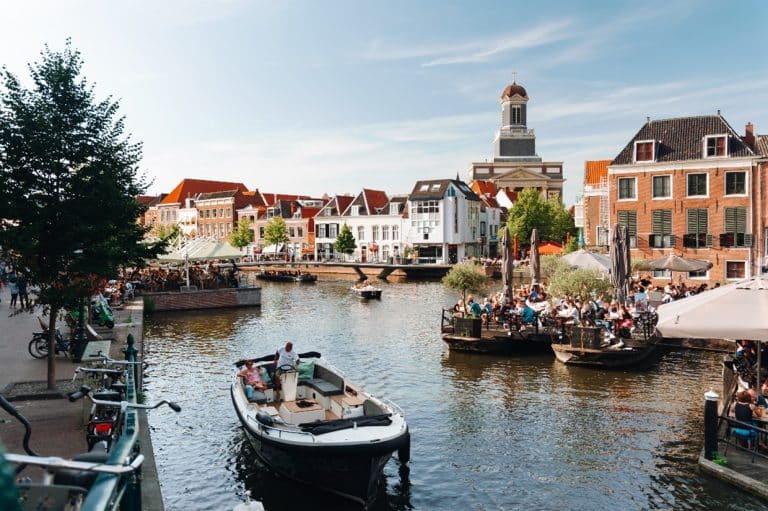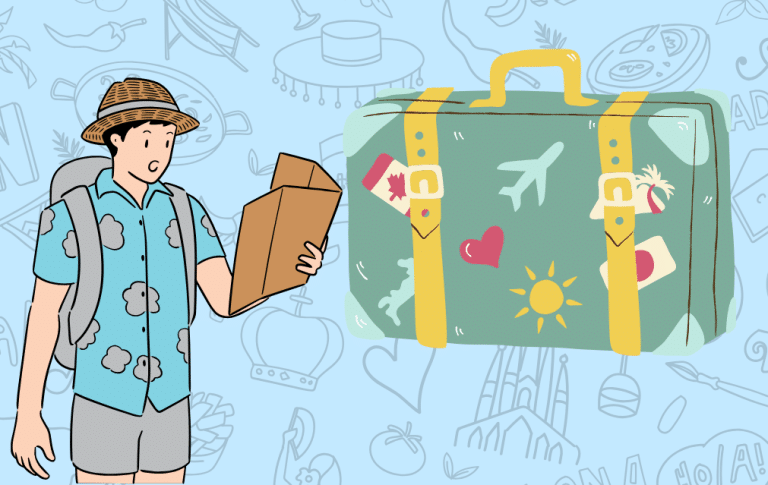Backpacking in Europe: packing list
Alright, dear adventurer…. so you’ve booked that flight or Eurorail ticket; backpacking in Europe is finally happening. One month of freedom, cheap wine, hostel bunk beds, and probably a questionable number of overnight buses. Then comes the not-so-glamorous part: figuring out what the heck to pack.
Don’t worry we’ve all been there, staring at an open backpack thinking: “How do I fit my
entire life in 40 liters… and still have room for souvenirs?”
This backpacking packing list is here to help you pack smart (and light) for a one-month backpacking trip across Europe. Whether you’re chasing the sun in Spain or braving the snow in Norway.
We’ll break it down for summer and winter, share useful tips from fellow travelers, and
throw in some backpacker wisdom straight from the common room of The Flying Pig Beach
where plans are made over beers and packing regrets are shared over breakfast.
Let’s make sure your bag has everything you need and nothing you’ll regret carrying up stairs in an old Lisbon building with no elevator.
What kind of bag should you bring?

Let’s keep it simple: you want a backpack. It doesn’t matter if it’s summer or winter. If
you’re moving around every few days, hopping on trains, buses, and budget flights, a
suitcase is going to slow you down big time (plus, dragging wheels over cobblestones =
instant regret).
Something around 40-50L is optimal. Big enough to fit your essentials, small enough
to carry without breaking your back. Bonus points if it opens like a suitcase and has a hip
strap (your shoulders will thank you).
Clothing for 1 month backpacking in Europe – summer & winter
Packing for one month sounds intense, but here’s the truth: you don’t need 30 outfits. You
need a small set of clothes you can mix, match, and wear over and over whether you’re sweating in Italy or layering up in Copenhagen.
You’re gonna re-wear. You’re gonna repeat outfits. And guess what? Nobody cares. We’re all
too busy trying to find cheap pizza and make the last train.
Summer packing list
● 4 T-shirts or tank tops
Go for breathable fabrics — synthetic or merino works better than heavy cotton
when you’re sweating through Rome.
● 1 long-sleeve shirt or light hoodie
Airco in buses or museums can feel like Siberia.
● 2 pairs of shorts
● 1 pair of long pants
Jeans are fine but heavy; light travel pants are gold for hot cities and hiking days.
● 1 lightweight jacket or raincoat
Especially if you’re heading to northern Europe. And yes, also Amsterdam can get rainy in
July.
● 1 swimsuit
● 5-7 underwear
● 3-5 pairs of socks
● 1 pair of sneakers (comfortable enough for 20k steps per day)
● Optional: flip-flops
For hostel showers, beach days, or walking to the kitchen half-asleep.
● 1 cap or sunhat
● Sunglasses
Bonus if they’re not the fancy ones you’ll cry over when they get sat on.
Winter packing list
Winter tip: Layers are life
● 3 thermal tops
Thin, warm, and dry fast. Wear them under everything.
● 2 sweaters or warm fleeces
● 1 insulated, weatherproof jacket
A good one will be your best friend. Don’t bring two coats, just layer.
● 2 pairs of warm pants
Fleece-lined leggings under jeans? Yes, please.
● 1 pair of thermal leggings
● 5-7 underwear
● 4-5 warm socks
● 1 pair of waterproof boots or winter shoes
You’ll want something warm, comfy, and that doesn’t hurt after 20k steps
● Beanie
● Gloves
● Scarf or neck warmer. You’ll be shocked how much warmth it adds.
How to pack your clothes (and not lose your mind)
Summer or winter, if your bag is chaos, you’ll lose your mind. Keep things simple
and easy to grab. Here’s how:
● Packing cubes = Use one for tops, one for bottoms, one for undies/
socks. You’ll never have to dig to the bottom of your bag for that one clean pair of
underwear again.
● Roll your clothes instead of folding takes up less space and helps avoid that
wrinkled look.
● Compression bags work wonders in winter — squash that puffy jacket like your life
depends on it.
● Always have a dirty laundry bag. A plastic bag will work, but a washable
one is even better. Nobody wants sweaty socks making friends with your clean T
shirts.
● Bring a packable daypack for city exploring or hiking.
● Don’t overpack “just in case” outfits.
Shoe packing summary: “the one pair to rule them all”
You only need one or maximum of two pairs of shoes. Anything more is just a packing nightmare.
For summer:
- Must-have: 1 pair of comfy, breathable sneakers or walking shoes (already broken in).
- Optional: Flip-flops or sandals (great for the beach, hostel showers, or airing out tired feet).
For winter:
- Must-have: 1 pair of waterproof boots or warm walking shoes (non-slip, weather-ready).
- Skip the flip-flops unless you want to use them in the hostel showers.
Shoe packing tips:
- If you really want a second pair, go small and lightweight.
- Use a plastic bag or shower cap to keep dirty soles off clean clothes.
Bottom line: Prioritize comfort, versatility, and sanity.
Tech & travel essentials
Aka: The stuff you’ll wish you had at 2am in a train station
You don’t need a ton of tech while backpacking in Europe but the right gear can save you from a lot of hassle. Think staying connected, fully charged, and not blowing €30 on a USB cable at the airport. Here’s what you actually need:
E-SIM or local SIM?
If your phone supports E-SIM, use it. You can set it up before your trip and switch data plans as you move between countries; no need to hunt for SIM cards everywhere.
Top picks: Airalo, Holafly, Nomad.
No E-SIM? Old school still works. Grab a prepaid SIM when you land (Lebara, Orange, Vodafone are easy to find).
Pro tip: Make sure your phone is unlocked before you fly.
Power bank
Non-negotiable. Outlets in hostels are hit or miss (especially on the top bunk), and long days out exploring = battery drain.
Go for at least 10,000 mAh, ideally with fast charging (USB-C is your friend).
While others fight over chargers, you’ll be ready to hit the streets fully powered.
Universal adapter
Europe = many countries, many plug types. Bring an universal adapter that covers:
Continental Europe (C, E, F)
UK & Ireland (G)
Switzerland (J, because of course they have their own)
Extra tip: Get one with multiple USB ports — some even have USB-C. Charging your phone, earbuds, and power bank all at once? Game-changer.
Sleep & smart essentials: because hostels aren’t exactly silent retreats
Let’s be real, sleeping in dorms isn’t always easy. Between snoring roommates and bright lights, catching good sleep takes a little planning.
Sleep essentials
- Eye mask: Blocks out that always-on dorm light and gives luxury hotel vibes (even if you’re on a bunk bed).
- Earplugs: You’re in luck! At The Flying Pig Beach, we offer free earplugs (because we know that one loud snorer can ruin your night). But if you’re picky, bring your own. Trust us, they’re worth it.
Additional essentials to consider when backpacking in Europe
- Noise-cancelling earbuds/headphones: A lifesaver on long bus rides or noisy hostels.
- Offline map app: Download Maps.me or use Google Maps’ offline feature so you’re never lost, even with no WiFi in a tiny mountain town.
- Kindle or e-book app: Way more convenient than lugging books, especially for long journeys or delays.
- Mini headlamp: Your phone light works, but a headlamp = hands-free packing in the dark, late-night hikes, or hunting socks in hostel laundry rooms.
- Backup USB cable: They will break when you need them most. Having a spare saves the day.
- Travel sized toiletries: Can be purchased also from the destination
Remember to ask travel document form your local pharmacy for any medications.
Cash & cards
Going cashless in Europe sounds dreamy until the card reader breaks right when you’re buying that train ticket. Here’s how to stay prepared and avoid financial mini-crises on the road:
Cards
- Main debit/credit card: Use one that has no foreign transaction fees (Visa or MasterCard are best). Add it to Google Pay or Apple Pay for quick, contactless payments.
- Backup card: Always carry a second card (preferably from a different bank). Keep it in a separate spot, not in the same wallet. You’ll thank yourself if your main card gets frozen.
Cash
- How much? €50–€100 is a good range. Cities are mostly card-friendly, but smaller towns or late-night cafés may only take cash.
- Where to get it? Use ATMs inside banks to avoid crazy fees. Skip the airport ATMs unless it’s an emergency.
- Pro tip: Always carry a little extra when heading to rural or remote spots, just in case.
Prepaid travel cards
Cards like Revolut or Wise let you preload money and avoid foreign exchange fees. You can freeze them if lost, and they’re great for budgeting on the go.
Documents
- Passport: Make sure it’s valid for at least six months beyond your trip.
- Copies: Carry printed and digital copies of your passport, visa, insurance, and key bookings.
- Travel insurance: Essential. Look for coverage that includes medical care, lost luggage, trip cancellations, and emergencies. Better safe than paying out of pocket abroad.
Piggy pro tip: Even in a digital world, some places especially in eastern Europe still run on cash. Bring some cash, and you’ll avoid awkward “sorry, no card” moments.
Avoid Border Issues: Visa Must-Knows for Backpacking in Europe
Europe is stunning but navigating its visa rules can feel like decoding a puzzle. Whether you’re roaming through the Schengen Zone or hopping into the UK, here’s a breakdown of what you actually need to know:
The Schengen area
The Schengen Zone includes 26 countries (like France, Spain, Italy, Germany) where you can move freely with one visa; no extra border checks.
Example: Fly into Amsterdam, then hop over to Rome and Berlin without flashing your passport at every stop.
How long can you stay?
Tourists from non-EU countries can stay up to 90 days within any 180-day period in the Schengen zone.
Pro tip: Keep track of your entry/exit dates. Overstaying can lead to fines or a travel ban.
Non-Schengen countries
Some European countries aren’t in Schengen, and they have their own rules:
- UK: Not Schengen. Check visa requirements depending on your nationality.
- Cyprus & Ireland: EU members, but not Schengen — double-check their visa policies too.
Who needs a visa?
- EU citizens: No visa needed; enjoy the ride.
- US, Canada, Australia, New Zealand: No visa needed for short trips (up to 90 days). Just make sure your passport is valid 3 months past your departure.
- Other nationalities: Check with each country’s embassy. Requirements can vary a lot.
ETIAS (coming in 2026)
Soon, even travelers from visa-free countries will need to register for ETIAS.
- What is it? A quick online travel authorization for Schengen visits.
- Who needs it? Citizens of 59 visa-free countries (e.g. US, Canada, Australia, etc.)
- Cost? €7 — valid for 3 years or until your passport expires.
- Application? Done online. Super simple.
Read more about ETIAS here.
Documents you might need
- Passport (valid for at least 3 months after you leave Europe)
- Return/onward ticket to prove you’re not overstaying
- Travel insurance (health + accidents) sometimes required, always recommended
Piggy pro tip: Planning to visit several countries? Double-check visa rules before you fly. A little research now means no border drama later.
Now you are ready for backpacking in Europe!
You’ve got the gear, the info, and the essentials — now all that’s left is to go. Whether you’re catching sunsets in Barcelona or sipping mulled wine in Prague, remember: backpacking in Europe isn’t about perfection, it’s about the ride.
Forget the flawless itinerary. It’s about missed trains, 3 AM pizza runs, hostel friendships, and stories you’ll laugh about later. That’s the magic.
So pack light, pack smart, and don’t forget your sense of humor. Because here at The Flying Pig, we know: the best journeys come with messy hair, full hearts, and spontaneous detours toward the nearest bar with a view.
Safe travels; adventure’s calling.
Check other travel tips from fellow backpackers from our “get to know our guests”-blog posts here!
xoxo Hugo







